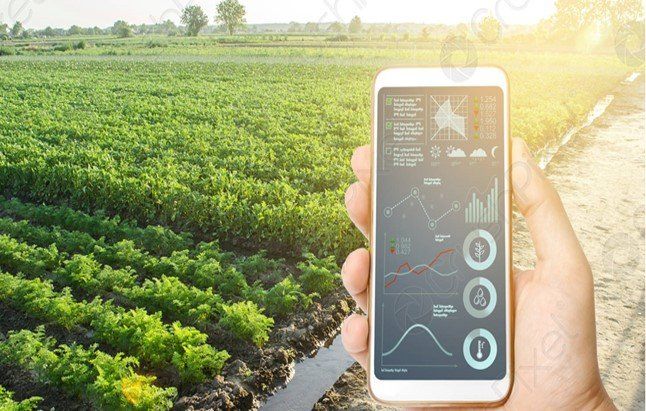Technology

The Setting There is growing interest in ways to improve mobility services. This interest has emerged under the title of Mobility as a Service (MaaS), broadly defined as a type of service that, through a digital platform, enables users to plan, book, and pay for multiple types of mobility service. Simply put ‘A one-stop travel management platform digitally unifying service inquiry, purchase and delivery’. Powered by digital technology, mobility suppliers, and those who bring them together through some aggregation framework (typically acting as a broker) to deliver an extended set of mobility choices, MaaS is seen as an ecosystem that can, through appropriate incentive-based regulation, offer a way forward for government and other interested parties to achieve a wide range of sustainability objectives such as reducing transport emissions and traffic congestion through, in particular, reducing private car ownership which translates to less car use and less traffic congestion. MaaS has generated a huge amount of interest as a prospective way to garner a greater commitment to mobility activity that aligns with achieving sustainability objectives. At the same time, MaaS gives travellers greater choices through targeted information on multi-modal journey planning with the support of a digital platform. While this all sounds very appealing, we have yet to see a MaaS product that is a successful business model and which offers various multimodal bundles through a subscription plan, despite a number of applications such as Whim in Finland, UbiGo in Sweden, and Stadtwerke Augsburg in Germany. With rare exception, there is also no evidence on how MaaS in an urban setting has contributed to achieving broad societal objectives through reduced private car use and hence emission savings. We highlight a number of issues that are linked to the ongoing challenge facing MaaS. Given that unpackaged service levels of each mode are exactly the same as those offered as packaged modes, we do not know whether the gain in utility by offering packaged services as the sum of unpackaged services is utility adding (or whether the loss in utility is also a possibility). If true, then what needs to be added in to increase expected utility? The considerations include financial and/or non-financial incentives, and content and functionality of a digital platform as a way of simplifying/reducing the effort required in making mobility decisions. For many people, they might be satisfied with what they already do, and exposing them to alternative mobility options through an App and packaging mobility services with incentives including multiservice incentives, may have no impact on their travel behaviour. This is the challenge and needs to be tested. Central to this challenge is identifying and quantifying what additional attributes and constraint changes are necessary to get an individual to move to a consideration stage (at least at this very early stage of persuasion in the diffusion of innovation) and then into an actionable testable mobility choice outcome. The Challenge Think about it; MaaS is essentially the same service levels of each mode separately and currently offered; and as a separate offer based on the same service levels, why would the offer of telling someone they can use particular modes at the same service levels through a digital platform (App) (if no relevant incentives – not necessarily financial) be of sufficient difference to change travel behaviour? Think of MaaS as adding another attribute (maybe more than one attribute) to an already unchanged set of attribute levels on unpackaged modes. This latter feature may explain why it appears to not be attractive enough for most people. Also, we know that many people are (sufficiently) familiar with travel options and know how to combine them without having to use an App. We should give the public more credit about knowing than is typically claimed in the MaaS deliberations. I call this the framing of MaaS. Let us use an example. Assume a person uses the car and the car trip is 39 minutes, parking cost is $20, tolls $10 but door to door. A multimodal trip without any discounts to what is on offer as separate modal services is a 10 minutes’ walk to the train, a 5 minute wait for the train, 50 minutes on the train, a $5 fare and a 10 minutes’ walk to the destination. What does MaaS do? We could tell you about this non-car trip if you did not already know! But knowing about an often inferior good (in terms of attributes that matter) is not enough to change travel behaviour, a reason why someone does not use it at present. So, what else needs to be on offer? For a start, we need to make the private car less attractive (something many of us have been promoting for years), which seems to not be possible or increasingly very difficult without serious reform in road use charging, and/or make the modal components of the alternative more attractive. But this latter initiative can happen outside of MaaS (planners and service providers have been doing this for years); so, if the additional attribute(s) associated with MaaS that is (are) claimed to represent the appeal of MaaS is (are) not significant, MaaS may add no utility at all. So, what is this missing attribute(s)? That is the crucial question. This comes down to what I refer to as differential effort and seamlessness beyond what is already known and available being the missing ingredient. Is the effort of engaging in a multi-modal interrogation via a digital app a sufficient investment in return for an expected utility gain? The eco-system of MaaS appears to have many challenges to face and resolve before we can see a pathway to scalability, and even a business case that might have commercial legs.

Executive Director of Tractor and Machinery Association of Australia Gary Northover says, despite electric tractors still being in their infancy in Australia, there are signs that we will join other major agricultural economies in the coming decades. As long as there’s sound leadership and the agricultural industry as a whole is fully committed and united.







